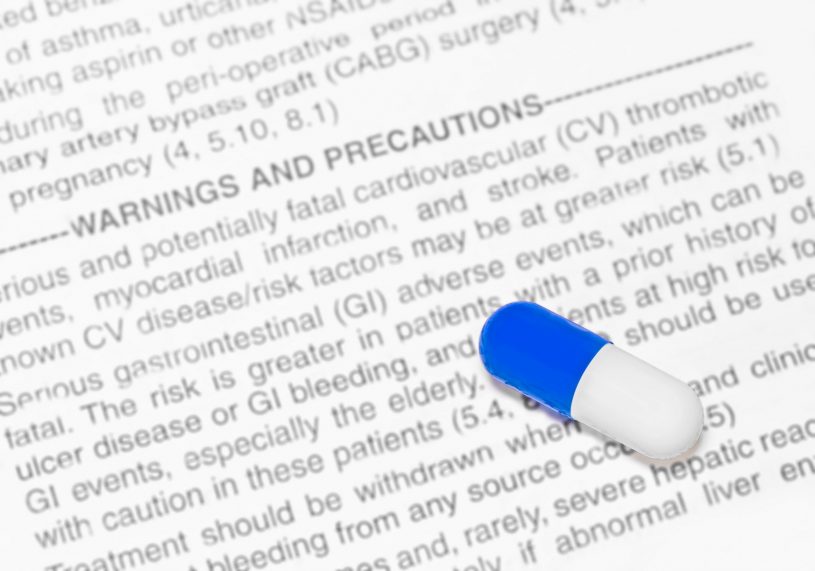Restoril is the generic name for Temazepam, which is an intermediate-acting 3-hydroxy hypnotic belonging to the benzodiazepine class of psychoactive drugs. Ambien is the brand name for Zolpidem. And has also proved to be an efficient medicine to treat insomnia.
Table Of Contents:
These two drugs, while sharing similarities, are not the same. They do not share all the same side effects, and they do not perform in exactly the same way. On that note, this article provides in-depth information about the similarities and differences between Restoril vs Ambien. The text also makes comparisons with other Benzodiazepines, such as Restoril vs Valium.
What Are Restoril And Ambien?
Temazepam was first synthesized in 1964. However, it wasn’t until the late 1980s that it became a widely prescribed hypnotic medicine that can treat insomnia. Ambien came into use a bit later, gaining mainstream popularity in the 1990s.
In temazepam vs zolpidem comparison, both drugs are prescribed to patients who suffer from various types of sleep disorders such as insomnia. Although both drugs are not the same, they function similarly. [1] While Restoril is a benzodiazepine, Ambien is a type-A GABA receptor agonist.
The mechanism of action of the two drugs involves creating a hormonal balance in one’s brain, which consequently helps to regulate the user’s sleep. More precisely, temazepam vs zolpidem similarity is that both slow down the central nervous system (CNS). As a result, they will cause drowsiness which helps patients fall asleep.
Restoril vs Ambien: Similarities and Differences
It is easy to classify Restoril vs Ambien as the same, due to the similarities shared in terms of function as treatments for short-term insomnia. However, Ambien is classed as a non-benzodiazepine sedative-hypnotic, which makes it different from Restoril. Still, both drugs are potent hypnotics, or sedatives used to treat sleep disorders. [2]
In terms of similarities, both drugs are labeled by the DEA as Schedule IV Controlled Substances; both are used in the treatment of short-term insomnia; both are available in pill form and both have the potential for abuse and side effects.[3]
On the flip side, the differences in a Restoril vs Ambien comparison are fairly significant too. One minor bit of information is that while the former is only available as oral capsules, Ambien comes in the form of oral tablets, sublingual tablets, and oral spray.
Additionally, the dosage strengths available for both drugs differ. Ambien comes in 5mg and 10mg dosages, with options for immediate or extended-release tablets. Restoril comes in 7.5 mg, 15 mg, 22.5 mg, 30 mg dosages, with no option for extended-release pills.
Further information about the differences between Restoril vs Ambien are detailed in the table below:
| Restoril | Ambien | |
| Drug Class | Benzodiazepine | Non-benzodiazepine sedative |
| Generic Name | Temazepam | Zolpidem |
| Treatment | Short-term insomnia | Short and long-term insomnia |
| Treatment duration | A few days to weeks | Months |
| Half-life | 16 hours | 2.6 hours |
It takes about 16 hours for Restoril’s half-life, while in Ambien’s case, it takes about 2,6 hours.

Temazepam vs Zolpidem: Warnings and Precautions
Like most hypnotics, both of these drugs come with warnings. For instance, users have reported severe Ambien anaphylactic reactions.[4] Additionally, using Ambien with other CNS depressants (e.g. opioid pain relievers) can cause deep sedation, coma, respiratory depression, and in severe cases, death.
It is clinically recommended that if symptoms do not improve within a week to ten days of using the drugs, patients should seek evaluation for possible underlying psychiatric disorders as they could be a cause for sleep problems.
One must not give Restoril to severely depressed patients, or those with signs of latent depression. However, in cases where there is absolutely no other alternative, these patients should be closely monitored by a medical professional.
Furthermore, pregnant women should avoid using Restoril as it can cause teratogenic effects on a fetus. Also, the drug is more likely to cause a hangover because it gets into the bloodstream by gastrointestinal absorption.
Restoril must not be used concurrently with substances such as alcohol. If one consumes alcohol a few hours before bed, or if one drinks alcohol regularly, the substance can interact with either of the drugs, leading to psychomotor impairment that can impair driving and reflex times.
In the same vein, one must seek the advice of a doctor before using Restoril or Ambien if already dosing on any other medications. With this information, the doctor will be able to advise if it is safe, and what precautionary measures to take to avoid severe Restoril side effects. Professional advice from the doctor is also necessary if one decides to stop taking the drugs for any reason.
Call 9-1-1 immediately if someone is experiencing the following symptoms after taking one of these drugs:
- Weak or shallow breathing
- Fast heartbeats
- Pounding headaches

Restoril Compared to Other Benzodiazepines
Depending on the specific needs of each person, a healthcare professional may recommend alternatives to temazepam. This can be due to a number of factors such as the health condition of the person, medications that may interact with the drug, disease interactions, etc.
The following are some alternatives to temazepam that may be recommended in such scenarios:
Temazepam vs. Clonazepam
Clonazepam also belongs to the benzodiazepine drug class. However, the primary function of clonazepam is different as the drug is used for treating panic disorders and preventing some types of seizures. This also applies in a Restoril vs Xanax comparison.
The brand name for clonazepam is Klonopin. For a temazepam vs clonazepam comparison, common side effects include sedation, depression, dizziness, loss of orientation, weakness, headache, and unsteadiness. These side effects are also common in a Restoril vs Xanax comparison.[5]
Temazepam vs Lorazepam
Lorazepam is similar in the sense that it is also used to treat insomnia symptoms. However, lorazepam is also used in the treatment of anxiety disorders, panic attacks, and alcohol withdrawal.[6]
Common side effects of both drugs include dizziness, muscle weakness, amnesia, loss of balance, headache, blurred vision, nausea, or vomiting. The brand name for lorazepam is Ativan.
Temazepam vs Valium
Valium is a brand name for diazepam, and the drug is similar to temazepam in the sense that it can help with sleep problems. However, in temazepam vs valium comparison, the primary function of valium differs.
This function is to help the muscles relax and reduce anxiety, and the drug works much quicker than temazepam does. Valium is also useful in the treatment and management of alcohol withdrawal and seizures.
Considering the higher potency of Valium, it is less likely to be prescribed for minor insomnia compared to Restoril. In the same way, this makes it more likely to be prescribed for anxiety disorders as it works more quickly than temazepam.
Restoril OTC Alternatives
There are over-the-counter alternatives for each benzodiazepine medication. These alternatives have various mechanisms of action and various side effects that help to determine which health condition they work best for.[7]
The following OTC medication can serve as effective alternatives to temazepam:
- Antihistamines
- Melatonin
- Thiamine supplements
- CBD/cannabidiol
- Synthetic GABA e.g Benadryl

There are also natural sleep aids and supplements that one can use as alternatives.[8] These include:
- Holy Basil
- Kava Kava
- Lavender
- Chamomile
- Rhodiola Rosea
- Valerian Roots
- Ashwagandha
It is important to note that one must not use any of these OTC medications or natural supplements without consulting with a doctor first. The risk of interactions exists and can worsen the situation rather than improve it.
Using Restoril Safely
Summarily, if one is struggling with sleep problems and needs medication to sort it out, it is important not to make the decision alone and seek professional advice from a doctor. This will ensure that one has full information about the prescribed drug, and side effects can be kept to a bare minimum – whether it is Restoril or Ambien.
Page Sources
- Erman, M. K., Erwin, C. W., Gengo, F. M., Jamieson, A. O., Lemmi, H., Mahowald, M. W., Regestein, Q. R., Roth, T., Roth-Schechter, B., Scharf, M. B., Vogel, G. W., Walsh, J. K., & Ware, J. C. (2001). Comparative efficacy of zolpidem and temazepam in transient insomnia. Human psychopharmacology, 16(2), 169–176. https://doi.org/10.1002/hup.238
- Voshaar, R. C., van Balkom, A. J., & Zitman, F. G. (2004). Zolpidem is not superior to temazepam with respect to rebound insomnia: a controlled study. European neuropsychopharmacology : the journal of the European College of Neuropsychopharmacology, 14(4), 301–306. https://pubmed.ncbi.nlm.nih.gov/15163440/
- T Carnwath. Temazepam tablets as drugs of misuse. BMJ. 1993 Aug 7; 307(6900): 385–386. https://www.ncbi.nlm.nih.gov/pmc/articles/PMC1678217/
- Juha Puustinen, Ritva Lähteenmäki, Janne Nurminen, et al. Long-term persistence of withdrawal of temazepam, zopiclone, and zolpidem in older adults: a 3-year follow-up study. BMC Geriatrics, 2018. https://www.ncbi.nlm.nih.gov/pmc/articles/PMC6003076/
- Mitler, M. M., Browman, C. P., Menn, S. J., Gujavarty, K., & Timms, R. M. (1986). Nocturnal myoclonus: treatment efficacy of clonazepam and temazepam. Sleep, 9(3), 385–392. https://pubmed.ncbi.nlm.nih.gov/2876485/
- Linnoila, M., Viukari, M., Lamminsivu, U., & Auvinen, J. (1980). Efficacy and side effects of lorazepam, oxazepam, and temazepam as sleeping aids in psychogeriatric inpatients. International pharmacopsychiatry, 15(2), 129–135. https://pubmed.ncbi.nlm.nih.gov/6108299/
- Culpepper, L., & Wingertzahn, M. A. (2015). Over-the-Counter Agents for the Treatment of Occasional Disturbed Sleep or Transient Insomnia: A Systematic Review of Efficacy and Safety. The primary care companion for CNS disorders, 17(6), 10.4088/PCC.15r01798. https://www.ncbi.nlm.nih.gov/pmc/articles/PMC4805417/
- Hu, Z., Oh, S., Ha, T. W., Hong, J. T., & Oh, K. W. (2018). Sleep-Aids Derived from Natural Products. Biomolecules & therapeutics, 26(4), 343–349. https://www.ncbi.nlm.nih.gov/pmc/articles/PMC6029681/

 Authored by
Authored by  Reviewed by
Reviewed by 
